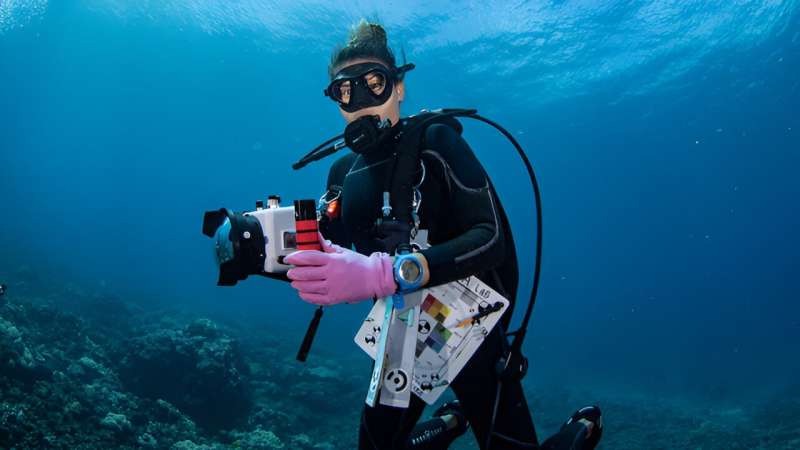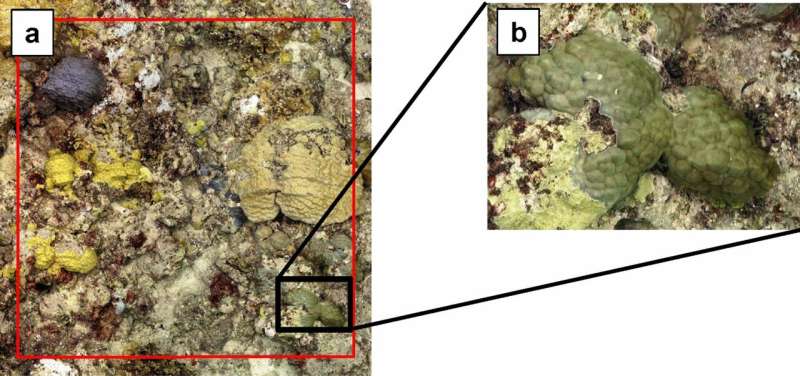This article has been reviewed according to Science X's editorial process and policies. Editors have highlighted the following attributes while ensuring the content's credibility:
fact-checked
peer-reviewed publication
trusted source
proofread
Coral colony size, shape impact marine complexity, health

Every curve and every angle of a coral colony holds the key to sustaining an array of marine species, according to University of Hawaiʻi at Hilo public impact research. UH Hilo graduate student Sofia Ferreira led a study published in Nature on predicting how coral reefs in Guam influence habitat complexity.
Ferreira, who hails from Paraguay, and marine scientists from UH Hilo analyzed data collected from overseas in UH Hilo's Multiscale Environmental Graphical Analysis Laboratory, or MEGA Lab, which specializes in the study of coral reefs.
"Underneath the shimmering waves, coral reefs flourish as underwater cities, carefully designed by nature's architects, corals themselves," said Ferreira. "Much like architects design unique houses for different people, corals create diverse habitats and refuge for the ocean's inhabitants. This diversity within coral refuges is the foundation to the health and resilience of coral reef ecosystems."
Ferreira worked on the study alongside researchers at MEGA Lab. She is enrolled in the UH Hilo's tropical conservation biology and environmental science program and earned a bachelor of science in marine science and certificate in data science from UH Hilo in 2022.
Reef city
Ferreira's teams' research sought to determine how the design of each coral home shapes a "reef city." Using high-tech underwater cameras, Ferreira and fellow MEGA Lab researchers mapped 208 coral reef sites surrounding the island of Guam.
The team used 3D photogrammetry techniques to survey the plots. From these reef maps, more than 12,000 corals were individually assessed, capturing their size and growth shape. The innovative study found that every curve and every angle of a coral colony holds the key to sustaining an array of marine species.

Coral conclusions
According to the study, the authors concluded that the traits of coral colony size and morphology are strong predictors of habitat complexity in Guam's reefs and should be included in coral reef monitoring programs.
Ferreira explained that coral reefs, the lifelines of coastal and island communities, are facing escalating threats from both local and global stressors. "[Our] findings offer a glimpse of hope, casting light on the inner workings of these vital ecosystems."
The research team hopes the study can offer vital insights and a foundation for future research to assess the overall impact fluctuation reef habitats can have on reef-associated organisms under climate change.
More information: Sofia B. Ferreira et al, Prediction of habitat complexity using a trait-based approach on coral reefs in Guam, Scientific Reports (2023). DOI: 10.1038/s41598-023-38138-1
Journal information: Scientific Reports , Nature
Provided by University of Hawaii at Manoa




















